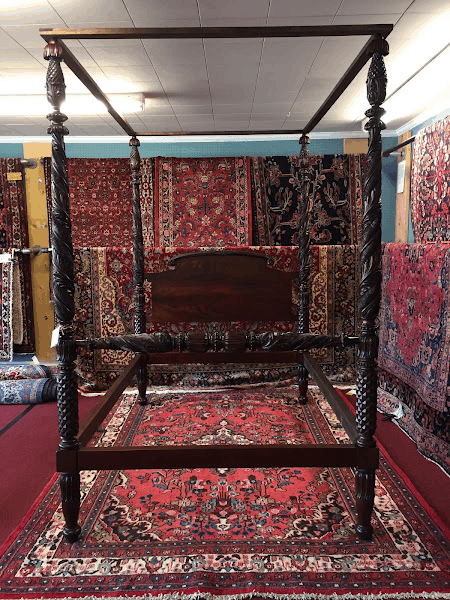
Rope beds may seem like a thing of the past, but they were once a common sleeping arrangement in many households. These beds were made by weaving ropes across a wooden frame, creating a supportive surface for a mattress. In this guide, we’ll explore the history and significance of rope beds, as well as how they work.
What is a rope bed?
A rope bed is a type of bed that was commonly used in households before the invention of modern spring mattresses. The bed frame is made of wood and has ropes woven across it in a criss-cross pattern. The ropes are then tightened to create a supportive surface for a mattress. Rope beds were popular in the 18th and 19th centuries and were often found in rural areas or in homes of lower-income families. Today, rope beds are considered a unique and historical piece of furniture.
How does a rope bed work?
A rope bed works by using the tension of the ropes to support a mattress. The ropes are woven across the bed frame in a criss-cross pattern, creating a grid-like surface. The mattress is then placed on top of the ropes and the tension is adjusted by tightening or loosening the ropes. This creates a supportive surface that can be adjusted to the sleeper’s preference. The ropes also allow for air circulation, which can help prevent mold and mildew from forming on the mattress. Overall, a rope bed provides a unique and historical sleeping experience.
The history of rope beds.
Rope beds have been used for centuries, dating back to ancient civilizations such as Egypt and Rome. They were popular in Europe during the Middle Ages and Renaissance periods, and were commonly used in colonial America. Rope beds were often made by hand and were a staple in many households due to their affordability and practicality. Today, rope beds are still used by some as a way to connect with history and experience a traditional sleeping arrangement.
Advantages and disadvantages of rope beds.
Rope beds have both advantages and disadvantages. One advantage is their affordability compared to other types of beds. They are also easy to assemble and disassemble, making them convenient for moving or storage. However, rope beds can be uncomfortable for some people due to the lack of support and the potential for sagging. They also require regular maintenance, such as tightening the ropes, to ensure they remain sturdy and safe to use. Additionally, some people may find the traditional design and materials of rope beds to be less aesthetically pleasing than modern bed options.
How to care for and maintain a rope bed.
Caring for and maintaining a rope bed is essential to ensure its longevity and safety. Regularly inspect the ropes for signs of wear and tear, and tighten them as needed. It’s also important to keep the bed frame clean and free of dust and debris. If the ropes become too loose or saggy, they may need to be replaced. Additionally, it’s recommended to rotate the mattress periodically to prevent uneven wear. With proper care and maintenance, a rope bed can last for many years and provide a comfortable and unique sleeping experience.
